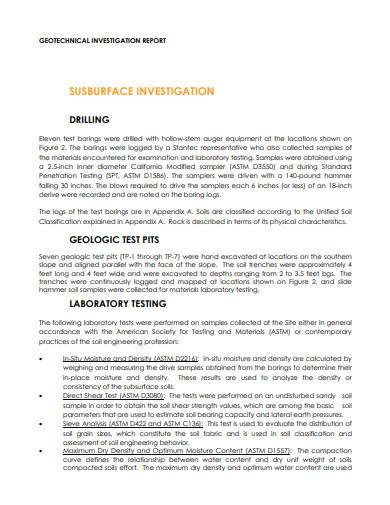In the realm of construction and development, the foundation upon which any project stands is as crucial as the structure itself. The preliminary site investigation serves as the essential first step in understanding the intricacies of the land and setting the stage for a successful endeavor. Through this meticulous process, builders and engineers delve into the history, geography, and environmental factors that may influence the construction site, uncovering valuable insights that are instrumental in shaping the project’s direction.
With a keen eye and a methodical approach, professionals conduct a preliminary site investigation to gather data on soil composition, drainage patterns, potential hazards, and regulatory considerations. This initial exploration is not merely a routine task but a critical undertaking that informs decision-making and mitigates risks down the line. By peeling back the layers of the site’s past and present conditions, stakeholders unveil a trove of information that paves the way for informed choices and strategic planning.
Importance of Preliminary Site Investigation
Understanding the significance of preliminary site investigation is crucial in any construction project. This initial phase lays the foundation for the entire project, providing essential insights into the site conditions and potential challenges that may arise. By conducting a thorough preliminary site investigation, project managers can identify potential risks early on and develop strategies to mitigate them effectively.
One key aspect of preliminary site investigation is assessing the soil conditions of the site. By analyzing the soil type, compaction, and moisture content, construction teams can make informed decisions regarding foundation design and construction techniques. This knowledge is invaluable in ensuring the structural integrity and stability of the building or infrastructure to be constructed.
Additionally, conducting a preliminary site investigation allows for the identification of any environmental concerns or regulatory requirements that may impact the project. By proactively addressing these issues during the early stages, project delays and costly modifications can be avoided. Overall, the information gathered through preliminary site investigation sets the groundwork for a successful and well-planned construction project.
Methods of Conducting Preliminary Site Investigation

To conduct a thorough preliminary site investigation, one commonly used method is to first review existing records and historical data related to the site. This may include previous environmental reports, geological surveys, property deeds, and any past land use information available. Analyzing this data can provide valuable insights into potential risks and constraints associated with the site.
Another important method is to physically visit the site and conduct a visual inspection. This on-site assessment allows investigators to observe the current conditions of the property firsthand, noting any visible signs of contamination, erosion, drainage issues, or other environmental factors that may impact future development plans. Taking photographs and making detailed observations during this step can help in documenting findings accurately.
Engaging with professionals such as geologists, environmental scientists, and site engineers is also a crucial method in preliminary site investigations. Their expertise can provide specialized insights into the specific aspects of the site, such as soil composition, groundwater conditions, and potential environmental hazards. Collaborating with these experts helps ensure that all facets of the site are thoroughly assessed and understood before moving forward with any development projects.
Benefits of Thorough Preliminary Site Investigation
Thorough preliminary site investigation can save time and money in the long run by identifying potential challenges early on. By conducting detailed surveys and assessments, issues such as soil contamination or unstable ground conditions can be uncovered before major construction begins.
An in-depth preliminary site investigation can also help to ensure the safety of workers and future occupants of the site. By identifying any environmental hazards or structural risks at an early stage, appropriate measures can be put in place to mitigate these dangers and prevent accidents or health concerns down the line. preliminary site investigation
Furthermore, a comprehensive preliminary site investigation can provide valuable data and insights that can inform the design and planning stages of a project. Understanding the specific characteristics and constraints of a site can lead to more efficient and effective development strategies, resulting in better outcomes for the project as a whole.

